In the fast-paced world of small business now, office efficiency is a top priority, and a key component of that efficiency is having the right office equipment. When it comes to document management, an office photocopier is a staple. It’s a workhorse that can streamline your operations, but how do you choose the perfect one? That’s where office photocopier reviews come into play.
The Role of Office Photocopiers
Before we dive into the world of our office printers and photocopier reviews, let’s remind ourselves of the significance of these machines in the modern workplace. Office photocopiers are versatile devices that go beyond basic copying. They can scan, print, and in some cases, even fax documents. These multifunctional devices have become the backbone of document management and workflow in offices of all sizes.
Why Read Office Photocopier Reviews?
So, why should you bother reading reviews before making your photocopier purchase? Here are a few compelling reasons:
1. Informed Decision-Making:
Office photocopier reviews offer you insights into the machine’s performance, features, and limitations. Armed with this knowledge, you can make an informed decision about which photocopier best suits your needs.
2. Cost-Efficiency:
Investing in an office photocopier is a significant financial decision. Reviews can help you ensure that you’re getting the most value for your money. By understanding the pros and cons of different models, you can make a cost-effective choice.
3. Matching Your Needs:
Not all photocopiers are created equal. Some are designed for very small businesses or offices with light usage, while others are industrial-grade machines for heavy-duty copying. Reviews can help you match your specific requirements to the right photocopier.
4. Product Longevity:
You want your photocopier to be a long-term investment. Reviews can shed light on the durability and reliability of different models, helping you select a machine that stands the test of time.
What to Look for in Office Photocopier Reviews
Now that you’re convinced about the importance of reading reviews, here’s what to keep an eye out for:
1. Performance:
Check if the photocopier lives up to its claims. Does it deliver on speed and quality? Does it handle high-volume print jobs efficiently?
2. Features:
Examine the range of features the photocopier offers. Does it have scanning capabilities, document finishing options, or advanced security features?
3. User-Friendliness:
A user-friendly interface and ease of operation are crucial. Reviews often highlight how intuitive a photocopier’s controls are.
4. Cost Efficiency:
Beyond the initial purchase price, consider running costs. Does it consume a lot of toner or require frequent maintenance?
5. Reliability:
Reliable performance is key. Reviews can reveal if a photocopier is prone to breakdowns or if it operates smoothly.
Where to Find Office Photocopier Reviews
So, where can you find these valuable reviews? Here are just a couple few sources to consider:
1. Manufacturer Websites:
Many photocopier manufacturers provide comprehensive product information, including user reviews and testimonials.
2. Independent Review Sites:
Numerous websites and publications focus on office equipment reviews. They offer unbiased assessments of various photocopier models.
3. User Forums and Social Media:
Online communities and social media platforms can be a goldmine of information. Real users often share their experiences and opinions about photocopiers.
4. Consult Your IT Department:
If you have an IT department, they may have insights into what photocopiers work best for your specific office environment.
Automatic Document Feeder (ADF)
In the hustle and bustle of the modern office, efficiency is the name of the game. When it comes to handling documents, especially in large quantities, an Automatic Document Feeder (ADF) can be a game-changer.
The Role of an Automatic Document Feeder (ADF)
An Automatic Document Feeder (ADF) is a feature commonly found in multifunctional office equipment such as photocopiers, scanners, and all-in-one printers. Its primary function is to automate the process of feeding multiple pages into the scanning or printing mechanism without the need for manual page-by-page loading.
Here are some key advantages of using an ADF:
1. Time-Saver:
In a fast-paced office environment, time is of the essence. ADFs can process a stack of documents swiftly, significantly reducing the time needed for printing and scanning them, copying and scanning documents, or printing large volumes.
2. Enhanced Productivity:
With an ADF, your office equipment can handle multi-page documents effortlessly. This boosts productivity as employees can focus on more critical tasks while the ADF handles document processing.
3. Consistency:
ADFs ensure consistent results by feeding pages in the correct order and orientation. This eliminates the risk of errors that can occur with manual feeding.
4. Versatility:
ADFs are not limited to standard paper sizes. They can handle various document types, including legal-sized papers color documents, receipts, and even ID cards.
5. Digital Transformation:
ADFs are a critical component of the digital transformation journey for businesses. They streamline the process of converting physical documents into digital formats, making it easier to manage, store, and share information.
Print Quality
refers to the overall appearance and clarity of text or images that are produced by a printer. It is a measure of how well a printer can reproduce text and graphics on paper or other media. Factors that can affect print quality include resolution, colour accuracy, sharpness, and the absence of defects such as streaks, smudges, or misalignment. High-quality printing is important in various contexts, including professional documents, photographs, marketing materials, and more. To achieve the best print quality, it’s important to use all the printers, appropriate printer settings, high-quality paper, and maintain the printer in good condition.
Duplex printing
Duplex printing, often referred to as double-sided printing, is an eco-friendly and efficient method of producing documents. This feature is a significant advancement in modern printing technology, and it offers several benefits:
- Paper Conservation: Duplex printing is a responsible choice for the environment. It reduces paper consumption by printing on both sides of a sheet, which is especially important in today’s world where sustainability is a priority.
- Cost Savings: By using less paper, you can significantly reduce your printing costs over time. This can be especially beneficial for businesses and individuals who regularly produce large volumes of documents.
- Professional Appearance: Double-sided printing gives documents a more polished and professional appearance. It’s ideal for creating booklets, brochures, reports, and any materials where a compact, sophisticated look is desirable.
- Convenience: Many modern printers offer automatic duplex printing, meaning you don’t have to manually flip the paper. This makes the process hassle-free and efficient, saving you time.
- Customization: Duplex printing allows for creative document design. You can include different content on each side, use color effectively, and experiment with various layouts to make your documents stand out.
Printing speeds
refer to print speeds to the rate at which a printer produces printed documents, typically measured in pages per minute (PPM) or images per minute (IPM) for different types of printers. The speed at which a printer can operate and print speed varies depending on several factors:
- Type of Printer: Different types of printers, such as laser printers, inkjet printers, and dot matrix printers, have varying printing speeds. Laser printers, for example, are known for their faster PPM rates compared to most inkjet printers.
- Quality Settings: The printing speed can be affected by the quality settings you choose. High-quality settings, such as those used for detailed graphics and images, often result in slower printing speeds, whereas draft or economy settings are faster.
- Connection and Data Transfer: The connection between your computer and the printer, as well as the complexity of the document being printed, can impact printing speed. For example, using a USB 3.0 connection can be faster than USB 2.0, and large, complex documents may take longer to process.
- Printer Model: The specific printer model plays a significant role. Different models have varying printing speeds even within the same type (e.g., different laser printers may have different PPM rates).
- Single-Sided vs. Duplex Printing: If your printer supports duplex printing, it may be slower when printing on both sides of the paper compared to single-sided printing.
Toner cartridges
are a key component in laser printers and photocopiers. They play a crucial role in the printing process, particularly in laser printing technology.
Laser Printer
A laser printer is a type of printer that uses laser technology to produce high-quality text and graphics on paper. It’s a common type of printer found in offices and homes due to its fast printing speeds, strong print quality and sharp output of color pages.
A laser printer is a type of printer that uses laser technology to produce high-quality text and graphics on paper. It’s a common type of printer found in offices and homes due to its fast printing speeds and sharp output. Here are some key features and principles of how laser printers work:
- Laser Technology: Laser printers use a laser beam to create an electrostatic image, also known as a “toner image,” on a photosensitive drum or belt. This image represents the content that needs to be printed.
- Electrostatic Process: The laser beam selectively charges parts of the photosensitive drum or belt with positive or negative charges based on the content to be printed. This process is controlled by the printer’s electronics and the data sent from a computer.
- Toner Application: Toner is a fine, dry powder that is positively charged. After the electrostatic image is formed on the drum, it attracts toner particles, creating a visible image.
- Transfer and Fusing: The toner image is transferred from the drum or belt onto the paper. To do this, the paper is given a strong negative charge, which attracts the positively charged toner particles. The toner is then fused onto the paper using heat and pressure, usually through a pair of heated rollers. This process melts the toner, bonding it to the paper permanently.
- Paper Handling: Laser printers typically have paper trays that hold standard-sized sheets of paper. Some models can also handle different paper sizes and types, such as envelopes and cardstock. The paper is fed through the printer one sheet at a time.
- Resolution: Laser printers offer high-resolution printing, resulting in sharp and clear text and graphics. The resolution is measured in dots per inch (DPI), and most modern laser printers can print at 1200 DPI or higher.
- Speed: Laser printers are known for their fast printing speeds. They can produce multiple pages per minute (PPM), with some high-end models capable of printing more than 100 pages per minute.
- Monochrome vs. Color: Laser printers come in both monochrome (black and white) and color variants. Monochrome laser printers are often used for text-heavy documents, while color laser printers are suitable for documents with graphics and color content.
- Network Connectivity: Many laser printers come with network connectivity options, such as Ethernet or Wi-Fi, making it easy to share the printer among multiple users in an office or home network.
- Duplex Printing: Some laser printers support duplex printing, which means they can automatically print on both sides of the paper, reducing paper usage.
multifunction printers
A multifunction printer (MFP), also known as an all-in-one (AIO) printer or a multifunction device (MFD), is a versatile piece of office equipment that combines multiple functions into a single device. These functions typically include printing, scanning color printing, copying, and faxing. Multifunction printers are commonly used in both home and office environments due to their convenience and space-saving design.
Here are some key features and functions of multifunction printers:
- Printing: Multifunction printers can produce documents, photos, and other types of printed material, similar to standalone printers. They can print in both monochrome (black and white) and color, and their printing capabilities may vary in terms of speed, resolution, and quality.
- Scanning: MFPs have built-in flatbed scanners or automatic document feeders (ADF) that can capture digital copies of printed documents or images. These scanned files can be saved to a computer, sent via email, or saved to cloud storage.
- Copying: Multifunction printers can make copies of printed documents. They often include features like duplex (double-sided) copying and resizing options.
- Faxing: Some multifunction printers come equipped with fax capabilities, allowing users to send and receive faxes directly from the device. Faxing functionality may be less common in newer models as digital communication methods have largely replaced traditional faxing.
- Document Feeding: Many MFPs have an ADF that can automatically feed multiple pages for scanning or copying, making it efficient for handling multi-page documents.
- Wireless Connectivity: Modern multifunction printers often support wireless connectivity options such as Wi-Fi and Bluetooth, allowing users to print and scan from mobile devices or computers without physical connections.
- Network Printing: MFPs can be connected to a network, enabling multiple users to print and scan to and from the same device. This is common in office environments.
- Touchscreen Displays: Many MFPs feature touchscreen displays that make it easy to navigate through various functions, adjust settings, and initiate tasks.
- Duplex Printing and Scanning: Some MFPs support automatic duplex printing (printing on both sides of the paper) and duplex scanning (scanning both sides of a document in a single pass), which can save paper and time.
- Cloud Integration: Some modern MFPs offer cloud integration, allowing users to print directly from cloud storage services like Google Drive or Dropbox.
- Security Features: MFPs may include security features such as password protection, user authentication, and encryption to protect sensitive documents and data.
- Energy Efficiency: Many MFPs are designed with energy-saving features to reduce power consumption when not in use.
Medium Sizes Business
A medium-sized business (often abbreviated as MSB) is a company that falls between small businesses and large corporations in terms of size, revenue, and scale of operations. The specific criteria for categorizing a business as medium-sized can vary by region and industry, but typically, medium-sized businesses have characteristics that place them in this category.
- Size: There is no universally accepted definition of a medium-sized business in terms of the number of employees or revenue, but they generally have between 50 to 500 employees. The exact thresholds can vary by industry and country.
- Revenue: Medium-sized businesses typically generate annual revenue ranging from several million to several hundred million dollars. Again, the precise revenue range can vary depending on the industry.
- Ownership and Structure: Medium-sized businesses can be privately owned, publicly traded, or a combination of both. They may have a more complex ownership structure than small businesses, and ownership may be held by a single individual, a family, a group of investors, or a combination of stakeholders.
- Management: Medium-sized businesses often have a more hierarchical management structure than small businesses. They may have specialized departments and middle management roles to handle various aspects of the business.
- Industry and Market Focus: Medium-sized businesses can operate in a wide range of industries, from manufacturing and retail to technology and services. They often have a more established market presence than small startups.
- Financial Resources: Medium-sized businesses typically have access to a greater pool of financial resources than small businesses. This can enable them to invest in growth, expand their operations, and weather economic challenges more effectively.
- Market Reach: Medium-sized businesses may operate regionally, nationally, or even internationally, depending on their industry and growth strategy.
- Competition: Medium-sized businesses often face competition from both smaller local competitors and larger national or multinational corporations. They need to find a competitive edge to thrive in their respective markets.
- Regulatory Compliance: Like larger corporations, medium-sized businesses may need to navigate complex regulatory environments, especially if they operate in highly regulated industries such as finance, healthcare, or energy.
- Employment and HR Practices: Medium-sized businesses usually have HR departments to manage employment-related matters such as benefits, payroll, and compliance with labor laws.
- Technology and IT Infrastructure: They may invest in more advanced IT systems and infrastructure to support their operations, including data management, customer relationship management (CRM), and e-commerce.
- Strategic Planning: Medium-sized businesses often engage in formal strategic planning to guide their growth and expansion efforts. They may explore opportunities for mergers and acquisitions to expand their market presence.
Google Cloud Print
Google Cloud Print was a cloud-based printing service developed by Google. It allowed users to print documents from their web-connected devices, such as computers, smartphones, and tablets, to any printer connected to the secure printing service, regardless of their physical location.
- Device Compatibility: Google Cloud Print was designed to work with a wide range of devices, including Chromebooks, Windows PCs, macOS computers, Android smartphones and tablets, and iOS devices.
- Printer Compatibility: Many modern printers supported Google Cloud Print, either natively or through the use of third-party software or hardware connectors. This made it possible to print to both newer and older printer models.
- Cloud-Based Printing: Users could print documents from anywhere with an internet connection, making it convenient for people on the go or those who needed to print remotely.
- Cross-Platform Support: Google Cloud Print was platform-agnostic, allowing users to print from different operating systems and devices.
- Sharing and Collaboration: It enabled users to share printers with others, making it useful for businesses and households with multiple users and devices.
- No Drivers Required: Google Cloud Print eliminated the need to install printer drivers on local devices. Instead, it relied on Google’s cloud infrastructure to handle the print job processing.
- Integration with Google Services: It integrated with Google’s suite of applications, such as Google Docs, Gmail, and Google Drive, making it seamless to print documents from these services.
Making the Right Choice
In the world of office photocopiers, knowledge is power. Reading reviews allows you to make an informed decision that aligns with your office’s needs and budget. So, before you make your next photocopier purchase, take some time to explore the reviews and find the perfect machine to enhance your office’s productivity and efficiency.
Office photocopier reviews are your gateway to making a smart investment in a crucial piece of office equipment. They provide the information and confidence you need to choose a photocopier that will become an integral part of your daily operations.

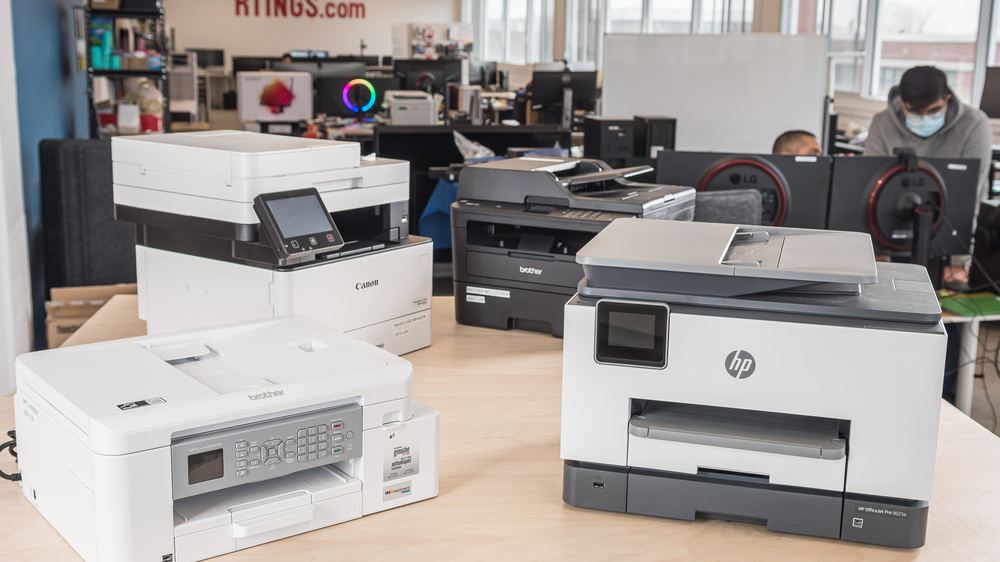
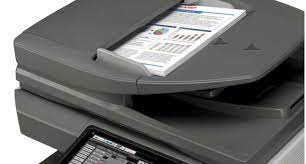
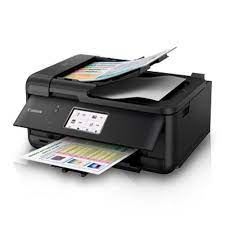
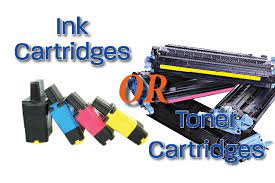
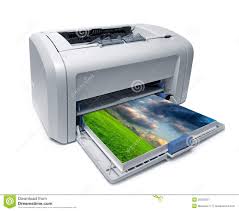
Recent Comments